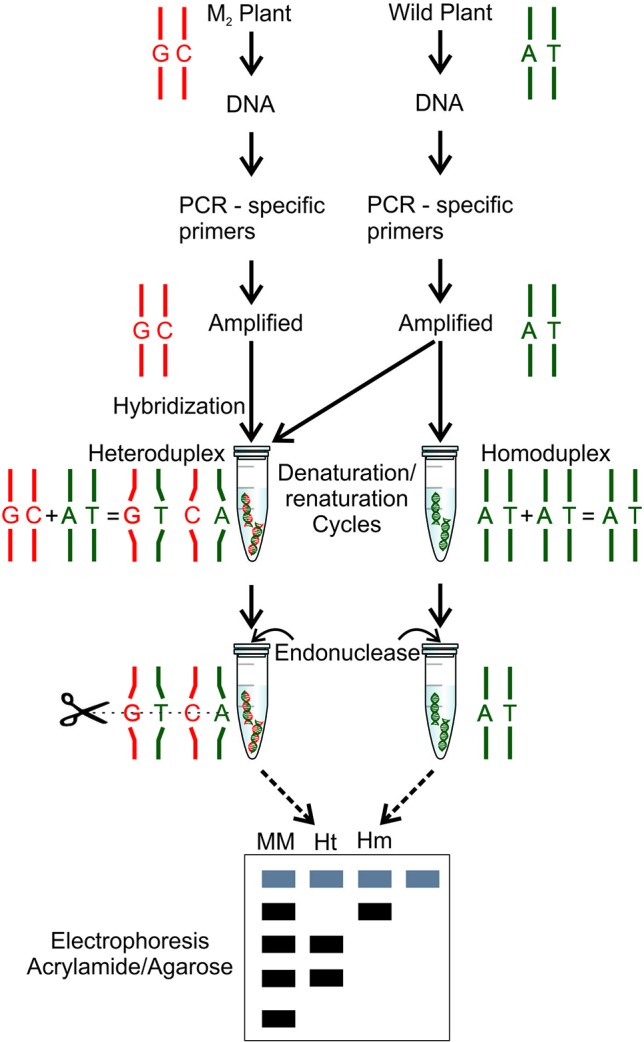Figure 5.

Mutation detection by TILLING technique (Till et al., 2003). The wild-type and mutant DNAs are subjected to a polymerase chain reaction (PCR) using gene specific primers. The amplified DNA is combined in the same tube, amplified mutant DNA and amplified wild-type DNA. In a second tube, the wild-type DNA is added two times. Both tubes are subjected to denaturation and renaturation cycles, forming, in a mutant case, an heteroduplex, a hybrid double stranded with a mutant strand and a wild-type strand, and in a wild-type case, a homoduplex is formed with a wild-type double stranded DNA. After, an endonuclease (CEL I) treatment is performed in both DNAs (hybrid and no hybrid), the nuclease is able to find and recognize the mismatch pairs in the hybrid DNA and cleave the double strand DNA. Both DNAs are subjected to electrophoresis using a molecular marker (MM), the heteroduplex (Ht) digested by the endonuclease and the undigested homoduplex (Hm).
